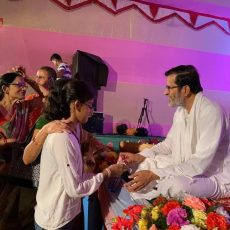Have you ever thought about living in a happy city would be a better idea than to live in a smart city? if yes, than you can really find out one that suites your pallete or may be find out if you are living in one happy city or not.
The data to measure the happiness of a city is already all around us, in the tweets we send on an hourly basis to the profiles we share on Facebook. This data is being captured and analysed to gauge the health and happiness of a nation.
The Hedonometer project which was set out to map happiness levels in cities across the US using data from Twitter.
Using 37 million geolocated tweets from more than 180,000 people in the US, the team from the Advanced Computing Centre at the University of Vermont rated words as either happy or sad.
Surprisingly this has been discovered that people were happiest when they were further away from home. Happyho also provide best tarot reading services in Noida and Delhi NCR India area.
This study threw up some interesting facts about the health of the citizens too. It found words like “starving” and “heartburn” were written far more frequently in cities with a high percentage of obese citizens.
It has bene found during the study that cities looking to understand changes in the behaviour of their citizens, for example to locate ads for public health programmes, vlog can look to social media for real-time information.
some very interesting facts have emerged. from this study:
- *every minute 100,000 tweets are sent globally.
*Google receives two million search requests every minute.
*Back in 2010 Google chief executive Eric Schmidt noted that the amount of data collected since the dawn of humanity until 2003 was the equivalent to the volume we now produce every two days. - *This data comes not only from posts to social media sites, mobile signals and purchase transactions but increasingly from sensors on objects from lamp-posts to skyscrapers.
The so-called internet of things offers a new way to analyse and measure city life. it provides the data about the leaking pipe lines to the flow of traffic.
A prediction from architect and urban planner Prof Mike Batty back in 1997 that by 2050 everything around us would be some form of computer is already starting to come true.
In Birmingham, lamp-posts are being fitted with sensors that can transmit information about cloud cover to offer hyper-local weather forecasting.
In Norway, more than 40,000 bus stops are tweeting, allowing passengers to leave messages about their experiences, and in London the mayor’s office has just begun a project to tag trees so that people can learn about their history.
At MIT’s Senseable City Lab, 5,000 pieces of rubbish in Seattle were geo-tagged and tracked around the country for three months to find out whether recycling was really efficient.
MIT is using weather data to guide taxi drivers in Singapore to where it is going to rain
It also promoted behavioural change. One guy stopped drinking water in plastic bottles when he saw that the bottles were all going straight to landfill.
Another very funny and unexpected result of the trial happened when a burglar stole some of the tags from the labs. And it didn’t take the police long to trace him.
Now the team is working on a project in Singapore which offers advanced weather forecasts to taxi drivers to get them to places in the city ten minutes before it starts to rain.





